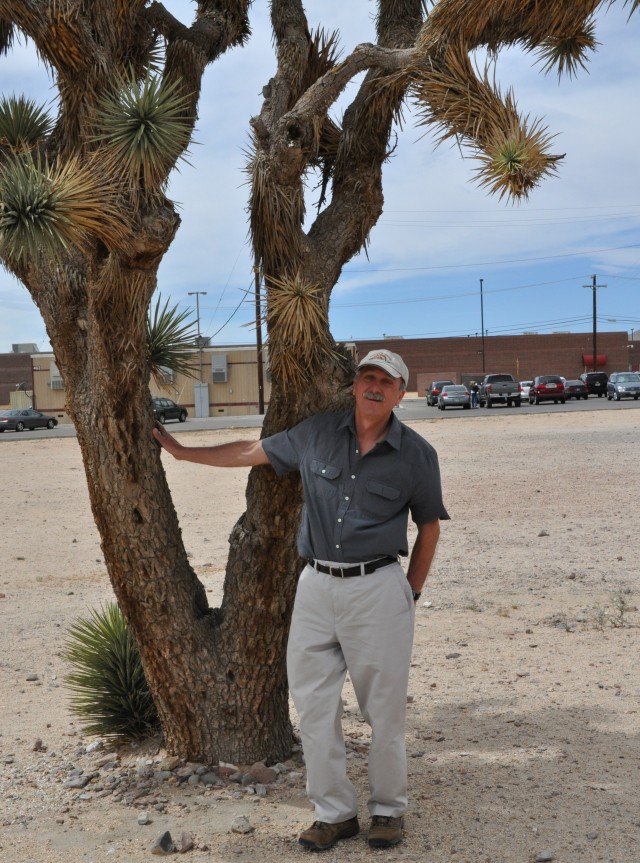FORT IRWIN, Calif.-At night, the North Star shines prominently in the High Desert skies, but for Vietnam veteran Edward Vigneault the Joshua tree outside his barracks during his 11 months at Fort Irwin 45 years ago helped him find his way back to where he trained before serving overseas.
Vigneault and his wife stopped by Fort Irwin for a brief visit on Monday morning.
"That was cool. I sort of regret that our original building was gone," Vigneault said. "My Joshua tree is still there. We had a little 10x10 lawn, and we watered that and it that was our front door. It was home. It was kind of cool to see that same area again."
Vigneault, who was born and raised in Maine, arrived at Fort Irwin in April 1966 after completing basic training at Fort Dix, N.J. and signal training at Fort Gordon, Ga. en route to Vietnam.
"The training here was good at least far as pulling the mission together, getting the chance to pull all our skills together and accomplish the mission," he said. "It worked out quite well when we went to Vietnam."
Most of his fellow Soldiers had just completed their schooling, so Fort Irwin was where they put all their skills together in three separate signal platoons, he said.
"There were three signal platoons and within each platoon they had all of the skills to basically set up communications systems and what I had was essentially handling the radio link to send the signal from one base camp to another," he said. "When we were deployed to Vietnam each platoon went to a different base and we essentially set up the communications systems for those bases."
Vigneault said the only reason he can think the Army sent the group out to Fort Irwin was that it is hot and they needed a place to form up the communications units.
"The time out here was the first time in heat since Maine summers. Maine summers don't hold a candle to the heat out here, so it was quite warm," he said. "There were definitely days of excess of 110 and when it was that hot you sort of had to pace yourself as best you could, drink plenty of fluids and try to seek whenever possible."
At the time Interstate 15 hadn't been constructed yet, so Route 66 was the main highway at the time and the only off-post entertainment was in Barstow, which wasn't much at the time, he said.
"I think one of the big improvements was improving the road out here. Back at the pass on the other side of Coyote Lake it was referred to as Deadman's Curve," he said. "Coming through the pass there was a real tight curve and they posted it as a 35 mph speed limit and hence, the name it was, not everybody came through it at 35 and some of them didn't make it."
While there were limited recreational opportunities off-post, the post boasted a bowling alley, a movie theater, an enlisted club, tennis courts and even a golf course at the time, he said.
"I didn't play it, but there was a golf course out here. It was the only green place out there and it was interesting," he said. "I didn't play golf, so I didn't really go out there except when we pulled guard duty occasionally."
When he pulled guard duty Vigneault said he tried to get the roving patrol, which meant driving an old pick-up around to check out things.
"One of our stops was the golf course so we used to drive out there at night," he said. "You'd drive into the golf course, and it would be covered with jackrabbits."
When asked why he decided to make the trek out to the desert 45 years after being stationed at Fort Irwin, Vigneault said his time in the desert was fascinating.
"I love my home state. I love Maine. I wouldn't move to the desert to live, but I did find the time I spent here was just fascinating and I'd like to take the opportunity to see it again," he said. "There's no way to describe the desert without seeing it. I found things interesting just to see and experience different things: the mountains, the desert, the heat."




Social Sharing